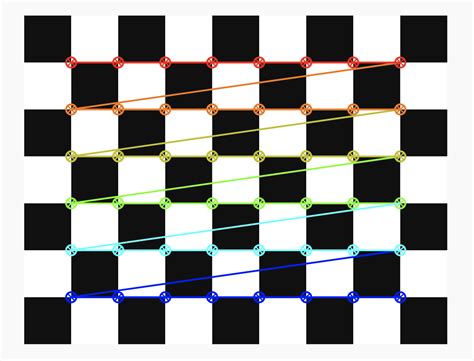In today’s digital landscape, the reliance on computer vision for various applications is growing rapidly. Camera calibration, though often seen as a mundane task, plays a pivotal role in ensuring the accuracy and reliability of these systems. It helps bridge the gap between the flat representations captured by cameras and the three-dimensional world they aim to emulate. Without proper calibration, the images or videos acquired can lead to misleading interpretations, significantly impacting any application that relies on accurate visual data.
Some industry pundits argue that traditional offline camera calibration techniques are becoming increasingly obsolete. This perspective suggests that with an approximate initial setup, collecting a few minutes’ worth of data from all sensors on-the-fly can solve calibration quickly and effectively. Indeed, resolving calibration in software is more efficient and adaptable to real-world challenges like temperature variations and equipment distortions. However, this approach isn’t universally applicable and may fall short in scenarios requiring high precision. For instance, think of autonomous vehicles where even minor inaccuracies could result in severe consequences.
Recent advancements in the robustness of computer vision systems cannot be overlooked. These systems are now being engineered to withstand various forms of system degradation such as obstructed optics, missing signals, and noisy data. One intriguing example involves a robot that could continue functioning even with a wheel loss, chassis distortions, and multiple faulty sensors simultaneously. This capability highlights the importance of having a resilient system architecture. Nonetheless, the foundational integrity often begins with accurate camera calibration, despite arguments suggesting otherwise.
Critics who advocate for less emphasis on explicit calibration tasks might point out tools like Apple’s Vision Pro or mobile browsers, which limit access to sensor data, thereby complicating the calibration process. Innovative technologies like 8thwall’s XR8 have made strides by achieving calibration in mere seconds, indicating that implicit calibration methods are catching up. However, professionals working in specialized fields such as critical imaging still find explicit calibration indispensable. This is particularly true for applications requiring precise distance measurements or long-range stereo imaging.
In the realm of robotics and autonomous systems, the discourse around calibration persists as a highly debated topic. For instance, in the automotive industry, it is deemed acceptable for a car’s camera system to auto-calibrate during the first few minutes of driving post-manufacturing. Similarly, pre-flight calibrations for drones are generally seen as a reasonable requirement. Yet, there is an undeniable need for robust calibration protocols to ensure that systems are always within specifications, especially in high-stakes scenarios like autonomous driving where human safety is a concern.
While some continue to dismiss the traditional approaches to camera calibration as outdated, practical experiences and expert opinions suggest otherwise. An error in RGB values input can drastically alter computer vision systems’ accuracy, affecting everything from object detection to 3D reconstruction. Hence, calibration isn’t just about initial setup; it’s about maintaining and refining the system’s accuracy over time. Tools like mrcal are designed to handle complex calibration needs, offering richer models and better uncertainty propagation, albeit with a steeper learning curve.
In concluding, while some industry voices downplay the necessity for rigorous camera calibration, the overwhelming consensus among experts and practitioners is that calibration remains a cornerstone of computer vision. It ensures that the system provides reliable, high-accuracy outputs essential for numerous applications from robotics and autonomous vehicles to medical imaging and augmented reality. Ignoring the importance of accurate calibration could lead to a myriad of issues, undermining the efficacy of advanced computer vision systems. For those invested in the future of AI and machine learning, understanding and implementing robust camera calibration methodologies is not just an option but a necessity.


Leave a Reply